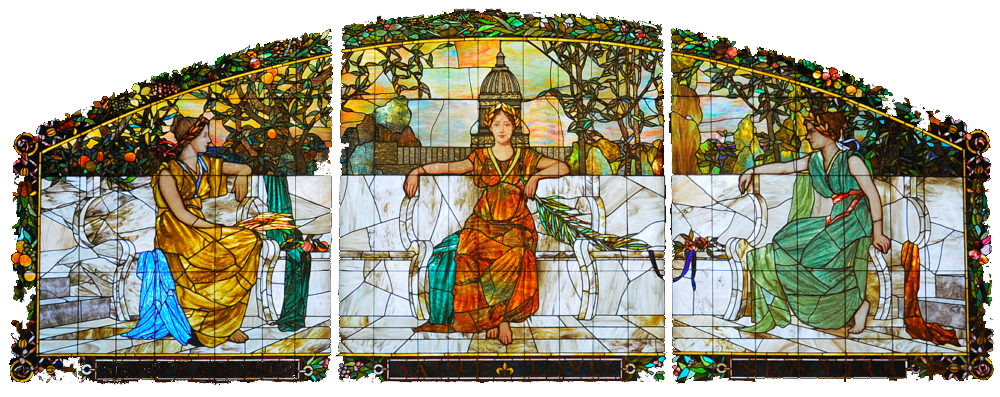I’m just back from a visit with my daughter and her partner. They recently moved to a new home, and I was eager to not only see them but to experience their new surroundings as well. I wasn’t disappointed. The house is charming. Inside, interesting rooms supply opportunities to create moods and memories. Outside, there’s an inviting deck, a nice yard, and garden beds to enjoy. A short walk through a vibrant neighborhood leads to a garden center that carries not only a variety of herbs, veggies, and flowers but is also home to a market featuring an eclectic selection of produce and freshly baked goods. The town’s main street is close by, lined with shops and restaurants. That’s where the train station is located as well.
I can imagine myself here. In my mind, I’m bringing back apple-cider donuts from the garden center on a Sunday morning, settling on the deck to enjoy them with a cup of coffee and the newspaper. I’m exploring stores and restaurants I’ve never visited before or catching the commuter train to spend a few hours in the city. The possibilities within each day rejuvenate me beyond anything I experience at home.
The silly part is that I can do all this same stuff at my house, too. I live within walking distance of bakeries. There are grocery stores nearby for last-minute whims. I can easily walk my purchases home to enjoy on my very own deck overlooking my own herbs and yard. I have a city, too, with a train convenient enough to ride into it. So…why does one place make me feel so much more alive than the other?
I’ve always been prone to wanderlust. As much as I like my home, as grateful as I am for everything in my life, there is always a part of me that longs to experience “elsewhere.” Of course, an impulse to travel is easy to explain. For most of us, leaving home means leaving behind never-ending chores that inevitably show up in chain-reaction formation. The thought of adding our footsteps to iconic sites that have witnessed histories we can only read about is a lot more appealing than taking yet another lap along the same neighborhood route for the umpteenth time. Learning about different cultures and people feeds both the mind and the heart. But while all of this is compelling, it isn’t necessarily what fuels my need to wander.
For me, being elsewhere lets me see myself through a different lens. It helps me understand not only who I am, but who I might be if undefined by the familiar. (This means I can get hyped simply by walking through a grocery store in new territory or figuring out the transit system in a city I don’t know.) Who would I become in a place that has no expectations of me? Which aspects of myself would I strengthen? Which habits would I jettison as no longer relevant? Re-creating myself triggers my imagination into overdrive. What would life be like if I lived somewhere else?
Most dictionaries define the word “wanderlust” as a strong desire to travel, a need to keep moving. Some studies even say that for approximately 20% of us, it’s a genetic remnant of our ancestors’ nomadic hunting and gathering days. But it’s interesting to note that where wanderlust is concerned, you never actually arrive anywhere. The “lust” is for the wandering itself.
Over the past fifteen months or so, it’s been harder to bloom where I’m planted without the influx of energy that comes from free-falling through a different setting. I’ve learned, however, that reverberations picked up through past wanderings never quite leave us. We can tap into them via memory and imagination. Granted, doing this isn’t nearly as invigorating as hands-on exploring, but perhaps “being there” isn’t the entire point. Ultimately, the benefits of travel reach their full potential only if we let them broaden our understanding of the world and how we can pour our best into it. Even I have to admit that we can do this while grounded.
Maybe that innate call to wander is what allows us to make the most of staying put.









Beautifully written! I hear your voice as I read..
Whenever I’ve gotten to travel for book stuff, on planes and trains especially, I’ve always gotten a charge out of it, especially in traveling alone. There’s something so remarkably freeing about setting my own agenda while on the road, and although I don’t actually take on a new persona… I *could*…
At the very least you get to exercise aspects of your personality that may not get much air time in your day-to-day environment!
Thank you, Pat! I’m glad you enjoyed it. Hope all is well with you!
Beautiful. And it feels so true. I think most of us do this when we travel–imagine ourselves planted in the place we are visiting.
Shawn, I wonder what would happen if we actually stayed? How long would it take for a place to lose its newness and feel like business as usual? Although I do think that certain places empower us no matter how long we’re there.